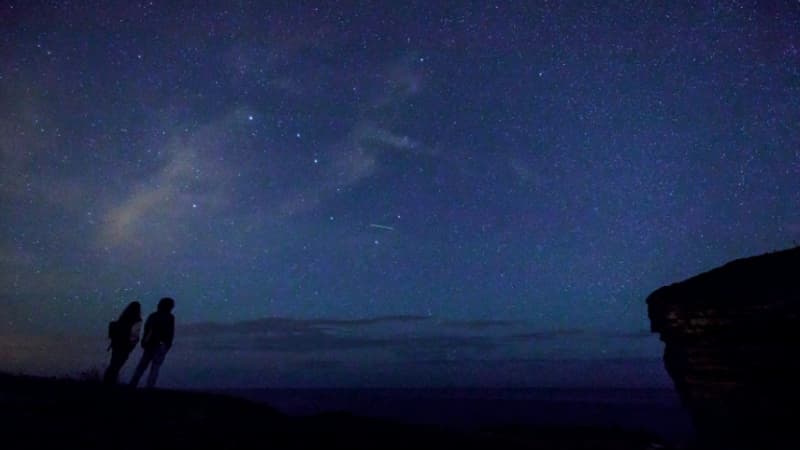You will have to look up. During the night from Saturday to Sunday, the Perseid shower, a phenomenon that returns every year, will reach its peak. This swarm of dust, coming from an old comet (109P/Swift-Tuttle) through which Earth passes each year during the first half of August, will be visible all over the world but will be most spectacular in the northern hemisphere.
One shooting star per minute is expected tonight. To get the most out of the show, here are some tips.
• Favor the northeast
To see most of the shooting stars, it will be necessary to favor the northeast, that is, in the direction of the constellation of Perseus, which gives its name to the Perseids. But, as NASA reminds us, “meteors can usually be seen all over the sky.”
“The Perseids appear to radiate from a point in the constellation Perseus, and each meteor has a similar orbit. Meteor showers get their name from the location of their point of origin, or what is called the radiant.
• Staying up late or getting up early
If the shower of shooting stars will be visible throughout the night, it will be even more so at dawn. According to NASA, the best time to view these stars is “between midnight and sunrise,” and meteor activity “will be at its peak an hour before sunrise,” around 6 a.m.
• Avoid light pollution
As with all meteor showers, large cities are not the best places to observe them, due to light pollution. For the Perseids, NASA recommends being “out in the country, away from cities and suburbs.”
“Brighter skies in suburban areas significantly reduce rates, and 10 or less is expected within an hour,” the agency explains.
• Raise your eyes
Unlike other astronomical phenomena, you don’t need specialized equipment to observe the Perseids. Meteors are visible with the naked eye, or better yet, with binoculars.
Source: BFM TV


